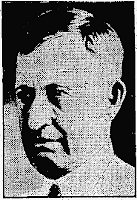 |
| Diana and her children |
 |
| Abortionist Maltzer |
Andrea Corey was 31 years old when she was referred by nearby Planned Parenthood to Southern Tier Women's Services in New York for a safe and legal abortion. Andrea, who worked as a secretary and bookkeeper, was sent home after her abortion, but she had retained tissue that caused clostridium perfringens septicemia ("gas gangrene"). She died at Rutland Regional Medical Center on February 28, 1993.
Human Life International mentions that abortionist Angel Acevado Montalvo was charged with manslaughter in two cases of maternal deaths from safe and legal abortion, including the February 28, 1992 death of Diane Adams. The other death was of of Rosael Rodriguez.
On Monday, January 6, 1930, "Mike" brought 17-year-old "Eudroa" from Wellinton, Kansas, to Wichita to seek an abortion at the hands of Dr. Charles C. Keester. They knew his name and looked him up in the phone book to find him. The couple told Keester that the girl was pregnant and wanted "an operation to get rid of the condition." Keester put her in some sort of reclining exam chair and examined her, then used instruments on her as Mike stood at her head and observed. Keester then helped Eudora from the chair and sent the couple to a hotel half a block away, where Keester kept his patients -- much the same way late-term abortion doctors currently keep their patients in motels. Mike paid $40 in cash and took Eudora to the hotel, where they registered as a married couple. On the 9th, Mike tried to contact Keester because Eudora was unwell, much as Jennifer Marbelli's family had been unable to reach LeRoy Carhart when she was ailing after her abortion. Mike wasn't able to reach Keester until January 10, when he went to the hotel, examined Eudora, and used some instruments to treat her. On Saturday, Eudora seemed better. On Sunday at about 2:30, Keester visited the hotel and said that Eudora was well enough to go home. Mike took Eudora to his mother's home in Wellington, telling her about the abortion. On Monday night, Eudora took ill. Mike told Eudora's sister what had happened, and the family summoned Dr. McGrew, who examined Eudora and recommended that she be taken to a hospital. She was admitted the next morning, January 14. She was suffering peritonitis. Dr. Van Deventer was summoned on January 23, and he and McGrew examined Eudora. They found her in grave shape, and summoned Dr. Snyder. Snyder performed surgery on January 31, with Dr. McGrew assisting with anesthesia, to try to save Eudora's life. McGrew testified later that Eudora's abdomen had been full of abscesses. Eudora's condition continued to deteriorate. On February 4, she was given a blood transfusion. On the evening of Feb 5 or 6, she asked everybody but her stepmother to leave the room. She said, "Mother, I am going to die. What Dr. Keester did to me is going to kill me." She then told of the trip to Wichita and the abortion. On February 12 Eudora became irrational, but she continued to linger until her death on February 28. Keester was convicted of manslaughter in Eudora's death, and his appeal was denied. UPDATE: I have since identified Eudora as Rena Armstrong.
On February 28, 1918, 27-year-old Mrs. Catherine Lurandowski died at Chicago's County Hospital from an abortion perpetrated by Katerine Eichenberg on November 20 of 1917.Eichenberg, whose profession is given only as "abortion provider", was also noted as "known to police" and operating sometimes under the alias of Ekowski.
On February 28, 1914, 23-year-old homemaker Martha Kwasek died at St. Elizabeth Hospital in Chicago from septicemia caused by an abortion performed by an unknown perpetrator.














 The
prolifers who gather outside when Carhart is perpetrating abortions
report seeing the woman arriving for her appointments on Monday,
Tuesday, and Wednesday, appearing "pale and weak."
The
prolifers who gather outside when Carhart is perpetrating abortions
report seeing the woman arriving for her appointments on Monday,
Tuesday, and Wednesday, appearing "pale and weak."